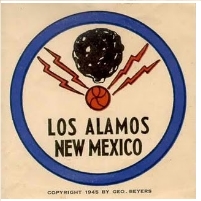Despite Fire Threat to Los Alamos Lab, Plans Proceed for Plutonium Bomb Factory
Thursday, July 07, 2011

The largest fire in New Mexico history finally receded from the edges of the Los Alamos National Laboratory, but it crept close enough to spark concern among local residents and anti-nuclear activists opposed to the lab’s proposed plutonium facility.
A watchdog organization, the Los Alamos Study Group, has fought to delay the building of Los Alamos’ new plutonium factory, known as the Chemistry and Metallurgy Research Replacement Nuclear Facility. The group sued the National Nuclear Security Administration and the Department of Energy, demanding they conduct a new environmental impact statement for the project because the scope of the new facility had expanded considerably since the original assessment was performed in 2003.
A federal judge, however, dismissed the lawsuit on grounds that Los Alamos was conducting a “supplemental” impact statement to determine the effects of the enlarged factory on the environment. The new facility is expected to be completed by 2023 and add 32,000 square feet to the lab overall.
That’s a head scratcher for Jay Coghlan, executive director of Nuclear Watch New Mexico. “We should be cleaning up, not building up new production plants that will produce yet more radioactive and toxic wastes.”
Located on the sprawling grounds of the lab are 20,000 drums of plutonium waste. Locals have pointed out that had the 93,000-acre blaze moved eastward, the entire region could have been endangered by the release of the highly toxic material.
Fire isn’t the only concern of people who monitor activities at the national lab. The site sits 5 miles from the Jemez volcanic field and about 5 miles from Valles caldera, one of the three largest, youngest, and potentially active calderas in the United States. The Pajarito Fault System, an active tectonic feature, lies just west of Los Alamos and has major sub-faults crossing beneath lab facilities.
New Mexico is no stranger to earthquakes and a seismic network run by the Los Alamos lab has detected 2,500 quakes in north-central New Mexico since its inception in 1973. The network used to consist of 20 tracking stations, but in recent years it has been reduced to seven.
-Noel Brinkerhoff, Ken Broder
Las Conchas Fire Woke Us Up—Let Us Now Stop the Plutonium Bomb Factory (by Subhankar Banerjee, Climate Story Tellers)
Federal Judge Rules in Favor of Continuing Los Alamos Nuclear Project Without Applicable Environmental Impact Statement, Dismisses Environmental Lawsuit (Los Alamos Study Group)
Los Alamos Study Group Files Appeal in Fight over Proposed Plutonium Plant at National Lab (Associated Press)
Nuclear Weapons Lab Reopens as Fire Danger Fades (by Susan Montoya Bryan, Associated Press)
Chemistry & Metallurgy Research Replacement Project (Waging Peace Today)
Shake, Rattle, and Roll: The Los Alamos Seismic Network (by James A TenCate and Peter M. Roberts, Los Alamos National Laboratory)
- Top Stories
- Unusual News
- Where is the Money Going?
- Controversies
- U.S. and the World
- Appointments and Resignations
- Latest News
- Trump to Stop Deportations If…
- Trump Denounces World Series
- What If China Invaded the United States?
- Donald Trump Has a Mental Health Problem and It Has a Name
- Trump Goes on Renaming Frenzy






Comments